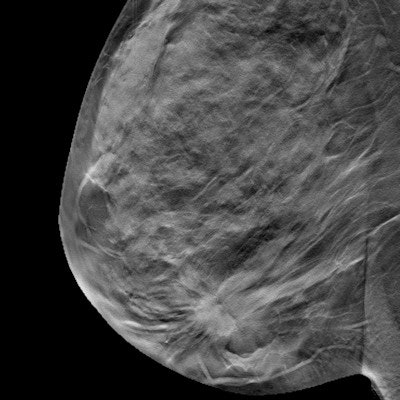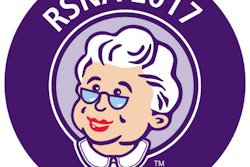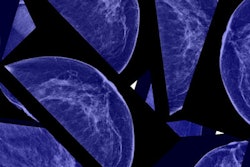
Reading digital breast tomosynthesis (DBT) exams immediately after they're acquired doesn't necessarily increase recall rates, according to research presented on April 7 at the Society of Breast Imaging (SBI) conference in Los Angeles.
The finding is good news for both patients and radiologists, since interpreting screening mammography right away -- and then sending patients to diagnostic imaging or biopsy immediately, if needed -- can reduce patient anxiety and make practice workflow more efficient, said presenter Dr. Nicole Winkler of the University of Utah.
"With immediate interpretation, the radiologist reads the screening mammogram while the patient waits," Winkler said. "There are a number of benefits, including the possibility of immediate workup and biopsy, if needed, in a single visit, as well as improved efficiency: The patients only go through one check-in and clothing change."
Recall boost?
Previous research has shown that immediate interpretation of digital screening mammography can increase recall rates. But this research has not been updated for DBT, Winkler said.
"A prior research study on screening 2D mammography found increased recall rate with immediate interpretation, from 14% to 18%, without significant change in cancer detection rate," she said. "That means more false positives with immediate interpretation."
Winkler and colleagues sought to compare performance metrics for immediate versus batch interpretation of screening tomosynthesis mammograms. The group included tomosynthesis mammograms acquired between January and August 2015 when screening exams were immediately interpreted and compared them with batch-interpreted historical controls acquired in 2013 and 2014.
All mammograms were performed at Huntsman Cancer Institute in Salt Lake City. The researchers tracked age, breast density, prior exams, and high-risk status (more than 20% lifetime risk) for each group. Four radiologists with subspecialization in breast imaging reviewed both sets of mammograms.
A total of 5,518 screening tomosynthesis mammograms were included (1,212 were batch-read and 4,306 were immediately interpreted). In the batch group, 79 patients were recalled and 19 biopsies yielded eight cancers. In the immediate interpretation group, 228 patients were recalled and 78 biopsies yielded 31 cancers.
Winkler's team found no statistically significant differences in performance metrics between the two groups.
| Batch vs. immediate reading of DBT screening exams | ||
| Batch-reading group | Immediate-reading group | |
| Recall rate | 6.5% | 5.3% |
| Cancer detection rate | 6.6 per 1,000 | 7.2 per 1,000 |
| Proportion of ductal carcinoma in situ (DCIS) | 25% | 22.5% |
| Biopsy rate | 1.6% | 1.8% |
| Positive predictive value for recall (PPV1) | 10.1% | 13.6% |
| Cancers per biopsies recommended (PPV2) | 42.1% | 39.2% |
| Cancers per biopsies performed (PPV3) | 40% | 39.7% |
Patient characteristics were different in the groups, so Winkler and colleagues used multivariable analysis to control for these factors.
"After adjusting for age, breast density, high-risk status, and presence of priors, we found no statistically significant difference between the groups in the odds of being recalled or in the odds of cancer detection," she said.
Is it experience?
The four radiologists who participated in the study had one to five years of postfellowship training, and all had been using DBT for two years before the study began, Winkler said. She noted that the study did not control for increasing radiologist experience with DBT over time.
"The recall rate remained low for all radiologists in the study, so it is likely that there would not be a large change with increasing radiologist experience with the technology," she said.
Winkler also said that an important limitation of the study was that synthesized mammography was introduced at Huntsman during the period when DBT exams were immediately interpreted.
"We started using synthesized mammography for many patients during the study period, and a proportion of patients had both synthesized and full-field digital mammography with tomosynthesis, which was not tracked," she said. "This may have impacted the recall rate. In fact, some recent studies have suggested that the recall rate may go down when synthesized 2D mammography is used with tomosynthesis, compared to conventional 2D mammography and DBT."
In any case, the study results suggest that practices can confidently offer immediate reads to their patients, Winkler concluded.
"Though our findings may not be applicable to all practices, the majority of our patients prefer immediate results, and our study indicates that it is an appropriate service to offer them," she said.



















